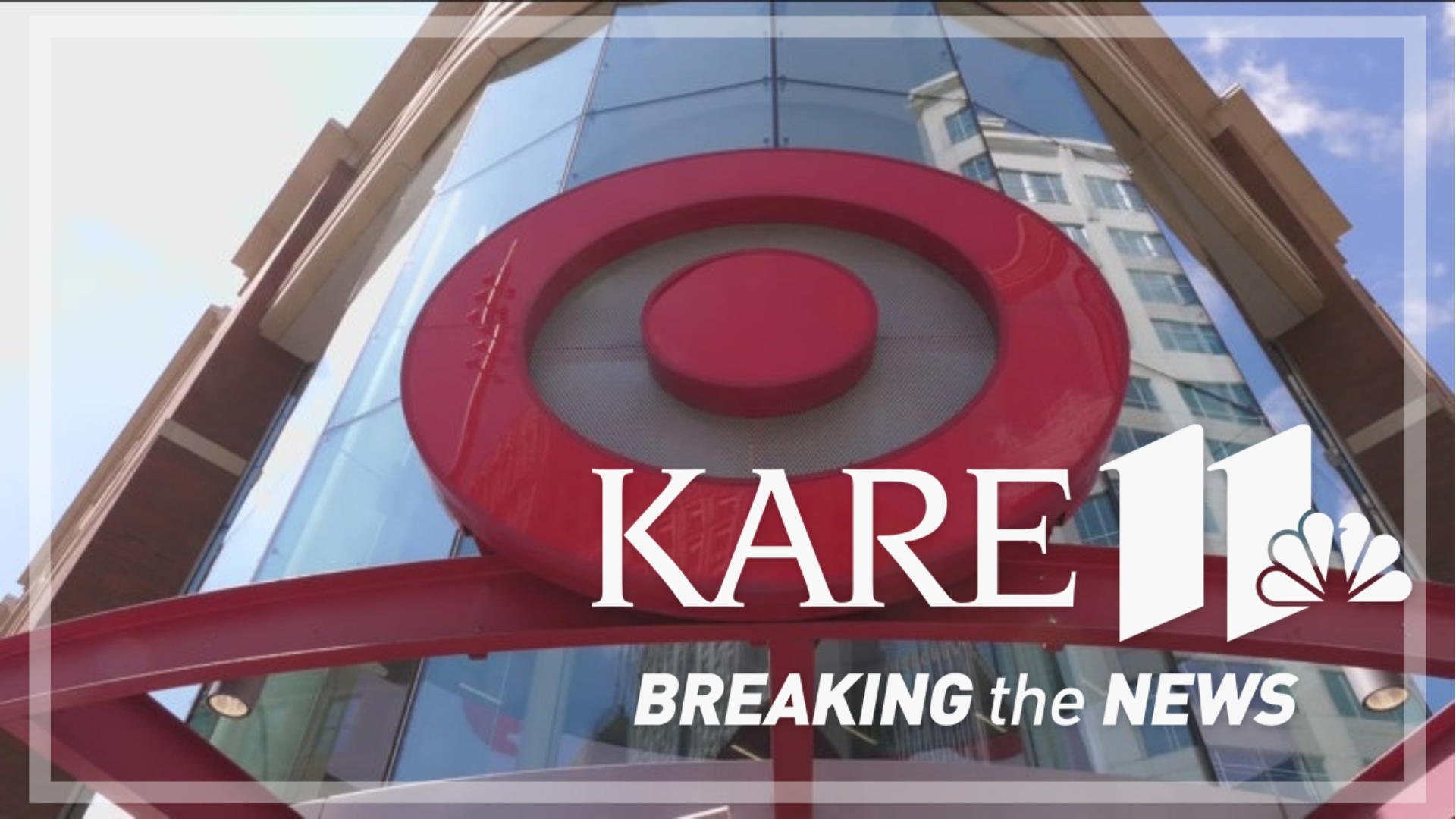Sunday, June 21
2:30 p.m.
Officials with the Wisconsin Department of Health Services announced on Sunday that the number of positive COVID-19 cases in the state has risen to 24,819.
A total of 744 deaths have been reported related to the coronavirus.
Wisconsin health officials say a total of 3,220 people have been hospitalized with complications from the coronavirus since the start of the pandemic.
Milwaukee County reports the largest number of cases with 10,267 and 371 deaths. Brown County reports 2,580 cases and 39 deaths, while Racine County has registered 2,081 cases and 58 deaths.
A more detailed breakdown of case statistics can be found on the Wisconsin Department of Health Services website.
11:30 a.m.
Officials with the Minnesota Department Health reported on Sunday that 461 more people have tested positive for COVID-19, the new cases increase the state's total to 32,920.
The MDH says 8 more people also died, bringing the death total to 1,380.
Minnesota hospitals are currently treating 322 patients for complications from the coronavirus, with 160 people in intensive care.
Of the newly announced deaths on Sunday, four people were in their 90s, three were in their 80s and one was in their 70s.
All of the deaths were residents of long-term care facilities, so far 1,093 deaths have been among residents of long-term care.
MDH reports that 28,663 people once diagnosed with the virus have recovered enough that they no longer require isolation.
Of those who have tested positive, people between the ages of 30-39 account for the most cases, with 6,627 cases and 10 deaths. Those between 80 and 89 years old account for the highest number of fatalities in one age group, at 471, out of 1,503 confirmed cases.
In terms of likely exposure to coronavirus, MDH says 7,192 cases involve exposure in a congregate living setting, 9,901 cases had known contact with a person who has a confirmed case, 7,353 cases had community transmission with no known contact with an infected person and 1,222 cases were linked to travel. Health care workers account for 2,163 of diagnosed COVID-19 cases.
Hennepin County has the most cases in the state at 10,830, with 747 deaths, followed by Ramsey County with 4,306 cases and 210 deaths. Stearns County reports 2,134 cases and 19 deaths.
MDH has prioritized testing for people in congregate care, hospitalized patients and health care workers, which may impact the scale of those numbers. However, now MDH is urging anyone who is symptomatic to be tested, along with anyone who attended recent protests or gatherings, even if they're not symptomatic. Testing locations can be found online.
Saturday, June 20
2 p.m.
The Wisconsin Department of Health Services issued new coronavirus numbers Saturday, showing a statewide rise in cases to 24,539.
3,203 (13%) of all reported cases have resulted in some form of hospitalization within the state, while 744 (3%) have died.
A sizable portion of total cases and deaths have been reported in Milwaukee County, at 10,167 and 371 respectively. Other counties with high case counts include Brown (2,572 cases and 39 deaths), Racine (2,079 cases and 58 deaths) and Kenosha (1,406 cases and 39 deaths).
Of the total 24,539 reported cases, 20% are 20-29 years old, 18% are 30-39, 16% are 40-49, and 15% are 50-59. While these age brackets makeup the majority of cases, deaths skew toward those 60 years and older, accounting for roughly 87% of total deaths - or 649 of the total 744.
A more detailed breakdown of case statistics can be found on the Wisconsin Department of Health Services website.
12 p.m.
The Minnesota Department of Health (MDH) reported 438 newly confirmed COVID-19 cases Saturday, bringing the total number of Minnesotans who have tested positive for the virus since the pandemic began to 32,467.
The total number of tests processed by private or state labs has reached 492,043, after MDH reported an additional 16,891 in the last day.
MDH says another 12 Minnesotans have died of complications from the virus, bringing the total number of fatalities in the state to 1,372. Of those deaths, 1,085 have occurred in long-term care or assisted living settings.
Minnesota hospitals are currently treating 324 patients for the coronavirus, with 161 of them dealing with symptoms serious enough to require care in the ICU.
Of those who have tested positive, people between the ages of 30-39 account for the most cases, with 6,557 cases and 10 deaths. Those between 80 and 89 years old account for the highest number of fatalities in one age group, at 468, out of 1,491 confirmed cases.
Hennepin County has the most cases in the state at 10,705, with 744 deaths, followed by Ramsey County with 4,244 cases and 209 deaths. Stearns County reports 2,131 cases and 19 deaths.
Friday, June 19
- MDH reports hospitlizations down as total cases surpass 32,000
- Walz orders flags flown at half staff for COVID-19 victims
- Department of Health, Department of Education release new guidelines
11:00 a.m.
The Minnesota Department of Health (MDH) reported 362 new cases of COVID-19 and 17 additional deaths across the state on Friday.
That brings the statewide totals to 32,031 cases and 1,361 deaths. Of those deaths, 1,077 happened in long-term care or assisted living.
The 362 new cases reported Friday are down from 387 cases reported Thursday.
Hospitalizations are slowly trending downward with 339 patients hospitalized as of Thursday and 168 of them in the ICU.
MDH reported that 14,216 tests were completed Thursday.
People ages 30-39 have the highest number of cases in the state with
6,483 and 10 deaths.
People ages 80-89 have the highest number of deaths with 465 out of
1,480 cases.
Thursday, June 18
4:30 p.m.
As he will do for the 19th of every month in 2020, Gov. Tim Walz instructed all flags across state and federal buildings to be flown at half staff from sunrise to sunset in memory of those lost during the COVID-19 pandemic.
“Thousands of Minnesotans have lost dear friends and close family members in the fight against COVID-19. Each life taken has been a heartbreaking tragedy for our state. In these challenging times, we must work together to slow the spread of this pandemic," the governor said in a Thursday statement.
Businesses, individuals and other organizations across the state are also encouraged to do the same, in a show of support not only for those lost, but also the loved ones they've left behind.
2 p.m.
The Minnesota Department of Health (MDH) issued new guidance Thursday for long-term care (LTC) facilities looking for safe ways to allow friends and family members to visit residents during the coronavirus pandemic.
For outdoor visits, MDH makes the following recommendations for long-term care residents:
- Residents must wear a mask or face covering, as tolerated
- Residents must not be currently positive for COVID-19 or in a quarantine or observation period
MDH also lists recommended visitor criteria for outdoor visits at a long-term care facility:
- Visitors must wear a mask or face covering during the entire visit
- Visitors must use an alcohol-based hand-rub when entering and exiting
- Visitors must be screened for signs and symptoms of COVID-19
- Visitors should not walk through the building to get to the outdoor visitation area
- Visitors should sign-in and provide contact information
- Physical contact is not recommended due to the risk of exposure, including hugging, kissing and holding hands
- All visitors must maintain six feet of social distancing
The Minnesota Department of Education released a 100-page guide for public schools to prepare for three potential schooling scenarios in the upcoming academic year.
A final decision for the schooling scenario that will be used is expected to be made July 27.
The three scenarios outlined in the guide are: in-person learning, hybrid learning and distance only learning.
- In-person learning for all students: Schools are urged to create as much space between students and teachers as feasible throughout the day, but will not be held strictly to the 6-feet distancing guidance during "primary instructional time in the classroom." This scenario will be implemented if COVID-19 metrics continue to stabilize and/or improve.
- Hybrid learning with strict social distancing and capacity limits: This type of learning will combine face-to-face and distance schooling. Schools and transportation will need to be limited to 50% maximum capacity. Social distancing of at least 6-feet would be implemented at all times. If distancing can't be achieved, the number of occupants will need to be reduced. Schools will need to implement contactless pickup/delivery of school materials and food. This scenario would be implemented if COVID-19 metrics worsen at the local, regional, or statewide level. This scenario will also be implemented within a school if they experience clusters of cases.
- Distance learning only: Distance learning includes online, but also other methods to ensure that all students are able to receive their education. MDE said they expect all schools to provide students with needed educational materials. This scenario may be implemented if local, regional, or statewide COVID-19 metrics worsen significantly enough to require the suspension of in-person learning.
MDE said in their guidance that it is possible that all three scenarios could be used in the 2020-21 school year.
KARE 11’s coverage of the coronavirus is rooted in Facts, not Fear. Visit kare11.com/coronavirus for comprehensive coverage, find out what you need to know about the Midwest specifically, learn more about the symptoms, and see what businesses are open as the state slowly lifts restrictions. Have a question? Text it to us at 763-797-7215. And get the latest coronavirus updates sent right to your inbox every morning. Subscribe to the KARE 11 Sunrise newsletter here. Help local families in need: www.kare11.com/give11.
The state of Minnesota has set up a hotline for general questions about coronavirus at 651-201-3920 or 1-800-657-3903, available 7 a.m. to 7 p.m. There is also a data portal online at mn.gov/covid19.



